ASTR 353: Structure and Dynamics of Galaxies

Kelly Holley-Bockelmann, Assistant Professor of Astronomy, working with Lauren Campbell.
Overview
This module has been incorporated into the Physics and Astronomy Department’s ASTR 353 course: Structure and Dynamics of Galaxies.
Professor Holley-Bocklemann had noticed that teaching the formation model with traditional lecture-style instruction did not promote active learning on the part of the student. She also noted that the level and quality of in-class discussion varied wildly from semester to semester. Hoping to improve the learning experience for the students, we paired to form a graduate student/faculty team in the BOLD Fellows Program in order to design and incorporate course content, activities, and assessments supported by research and our understanding of the learning process.
The module itself is hosted on Blackboard and is comprised of four online modules containing various activities and assignments. Each of the four segments takes approximately 1 week for completion, and the entire module is worth points equivalent to one homework assignment. I have provided, for the students, a list of detailed learning goals, so that they become aware of the purpose of the module and what is expected of them.
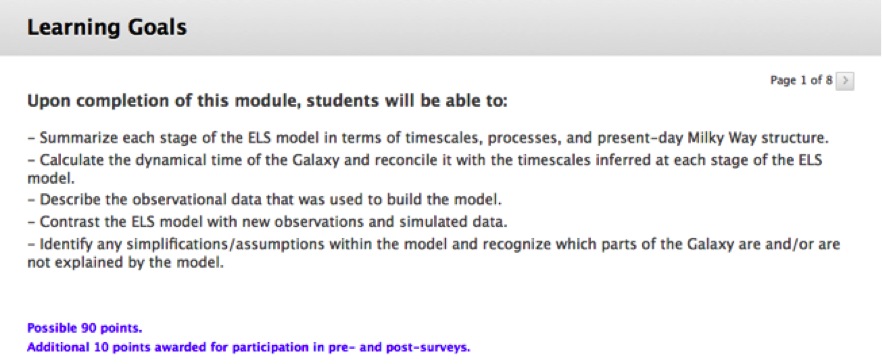
Within the first segment, students are asked to read the seminal paper: Eggen, Lynden-Bell, and Sandage (1962). They are then asked to write a short 3-2-1 response to the reading, a summary essay of the formation model, and complete a math problem. Once their essay is submitted, a video explanation becomes available to them, narrated by one of the field’s experts, Dr. Jonathan Bird.
The second segment challenges the students to create a visualization of the formation model. Guidelines for this assignment are, intentionally, vague. They are provided with an image bank, and given the option to utilize those provided or to obtain/create their own. This activity allows the student to creatively express their understanding of the process through visual representation.
The third and fourth segments focus primarily on discussion and peer-instruction. One asks the students to write a short description of the data used to inform the ELS model. They are then directed to a discussion board where they respond to the prompt:
“If you had unlimited resources, what data would you collect in order to best constrain the formation history of the Milky Way?”
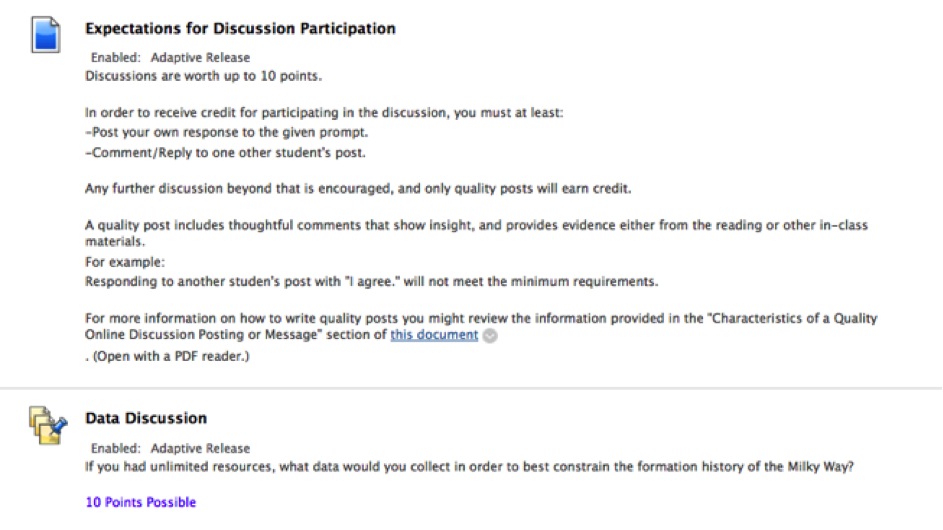
The other provides a second video, narrated by Dr. Jonathan Bird, in which he describes new results, and how they support/refute the claims of ELS. The students are directed to a second discussion board at the end of the video. Once the discussion board is closed, the students are tasked with writing an essay synthesizing the ELS model and how it fits into our current understanding of galaxy formation.
Assessing the Effectiveness of the Online Module
After receiving IRB approval, I investigated the effectiveness of this online module as a teaching tool by monitoring students’ learning gains across three measures.
1. Students’ response to pre- and post-module surveys. The survey questions were designed to assess the students’ comfort level with, and basic understanding of, the material presented. The module clearly increased students’ comfort level with the material presented.
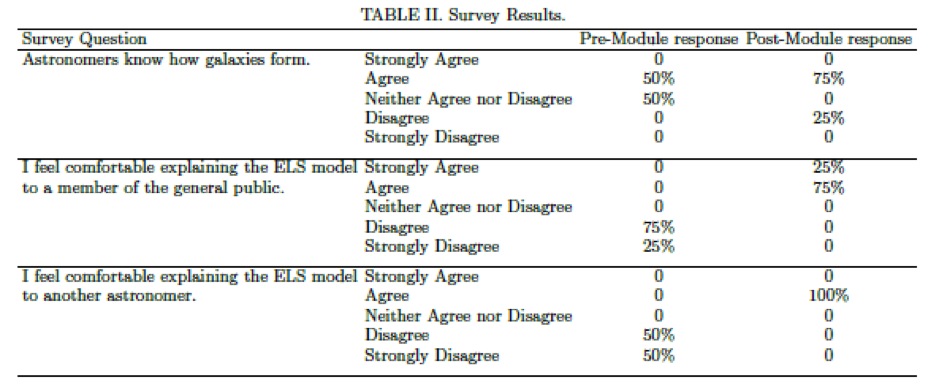
The post-module survey will also gather information regarding the students’ experience participating in the module. In general, students found the module valuable to their learning, and identified all elements of the module except the discussion board as contributing to that value.
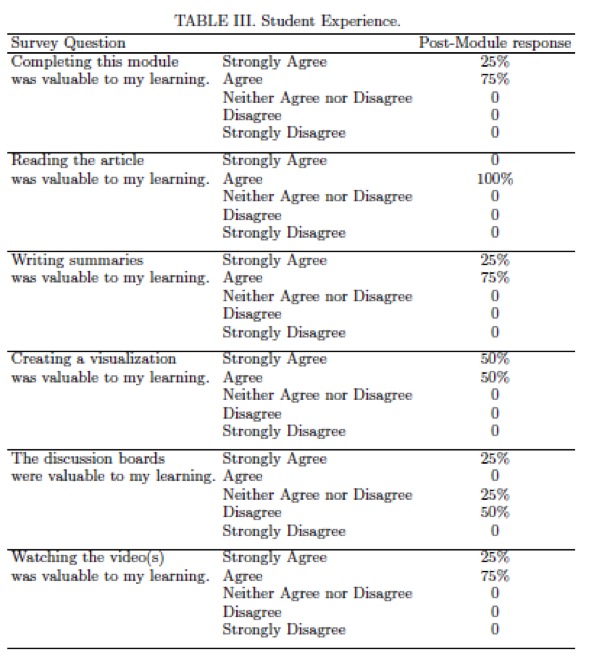
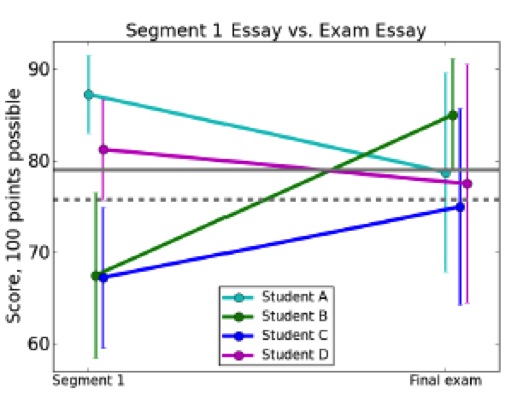
2. Students’ performance at the start of the module was compared with student performance on the course final exam. These results did not show a clear trend, suggesting that the post-reading work within the module helped the students who struggled the most initially, but did not help students who initially demonstrated strong understanding of the material.
.

.
3. Students’ performance on the final exam after participating in the module was compared to students’ performance on the final exam from previous semesters in which the content was delivered in the traditional lecture-style. There was a clear increase in the proportion of students who exhibited high performance when comparing the module to traditional class time.
.
Overall, we found the online module to be a successful method of delivering course content. The module assisted student achievement of four of the five learning goals. Incorporation of the online module also showed improvement in student performance on the relevant final exam questions.
